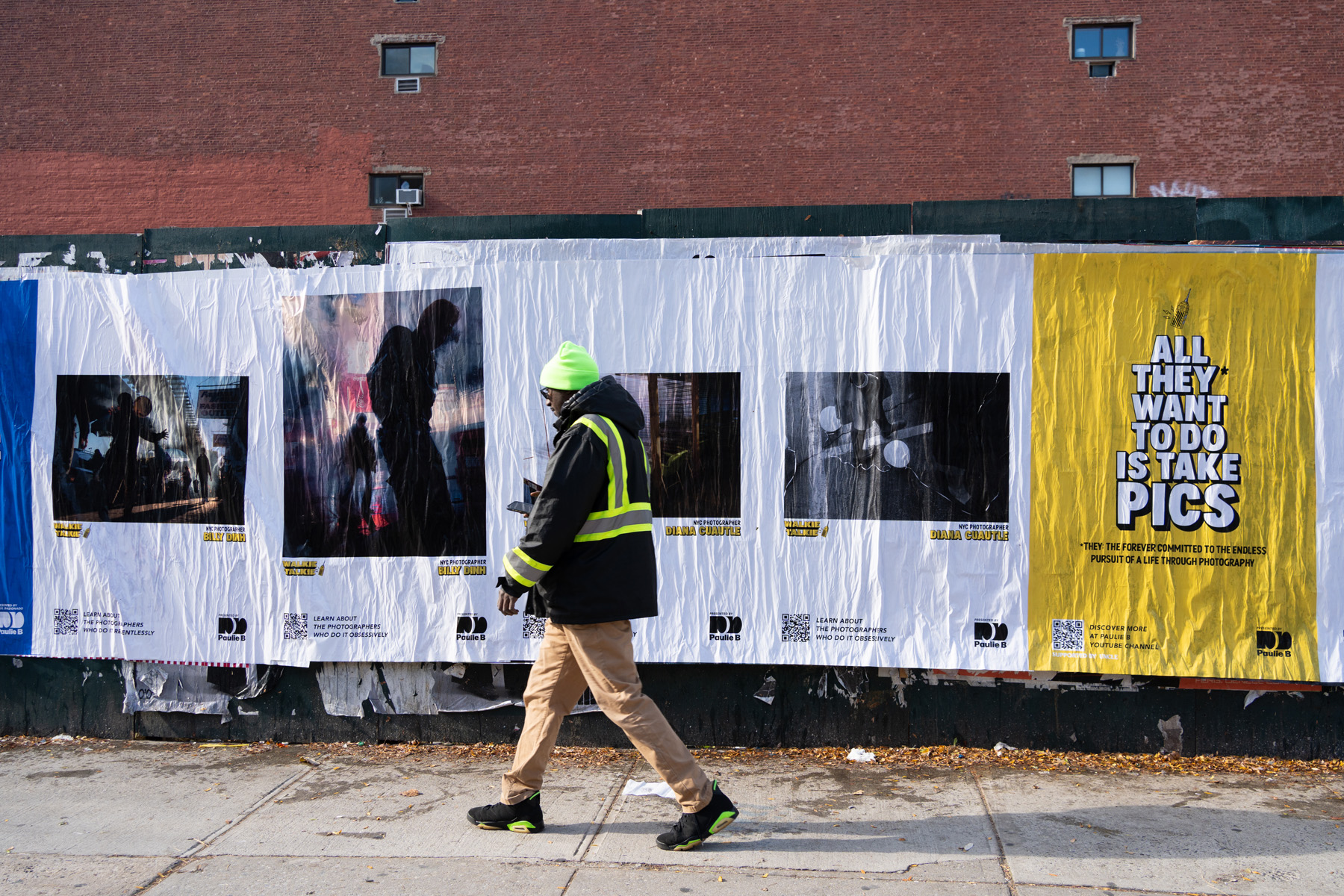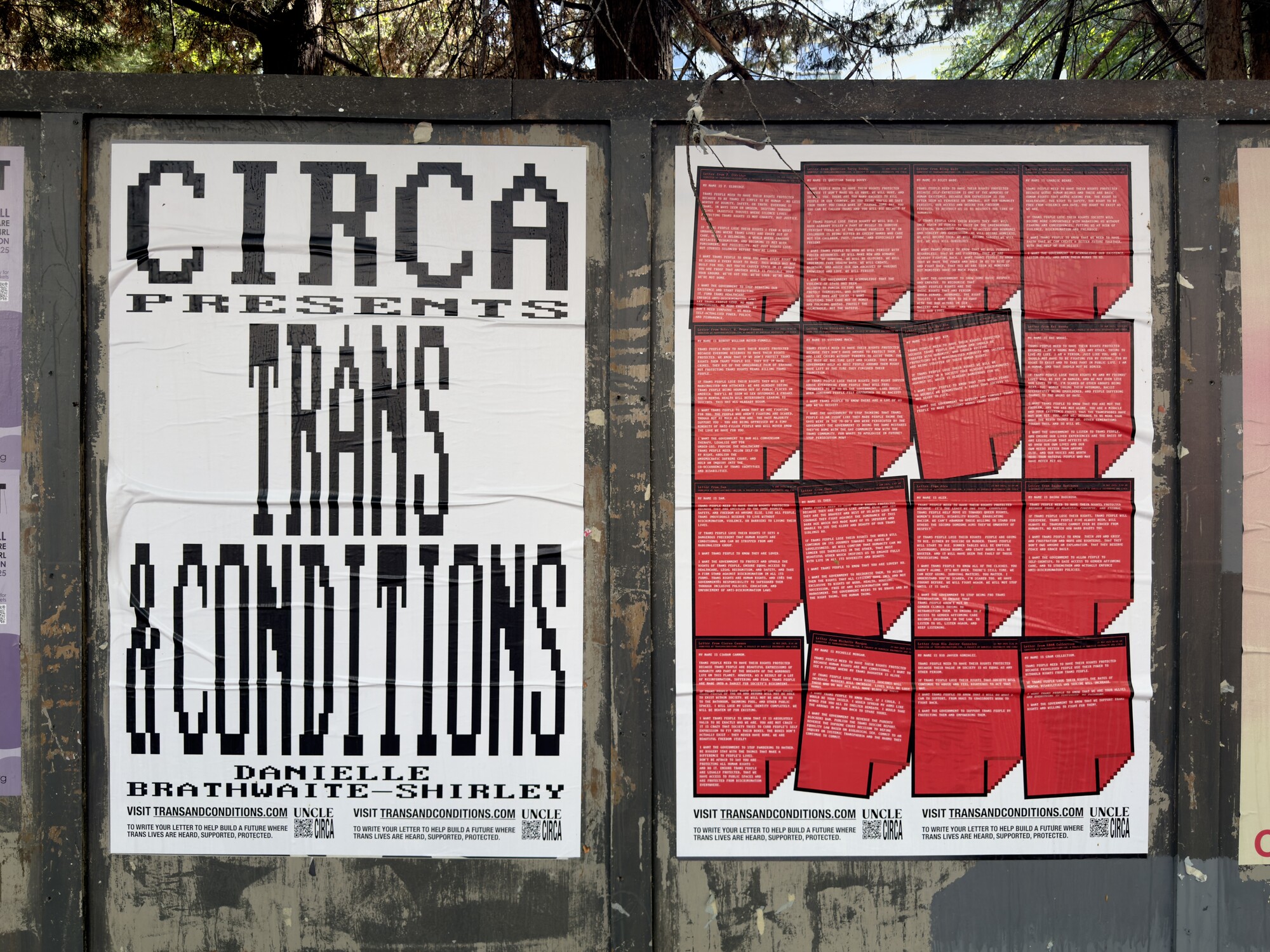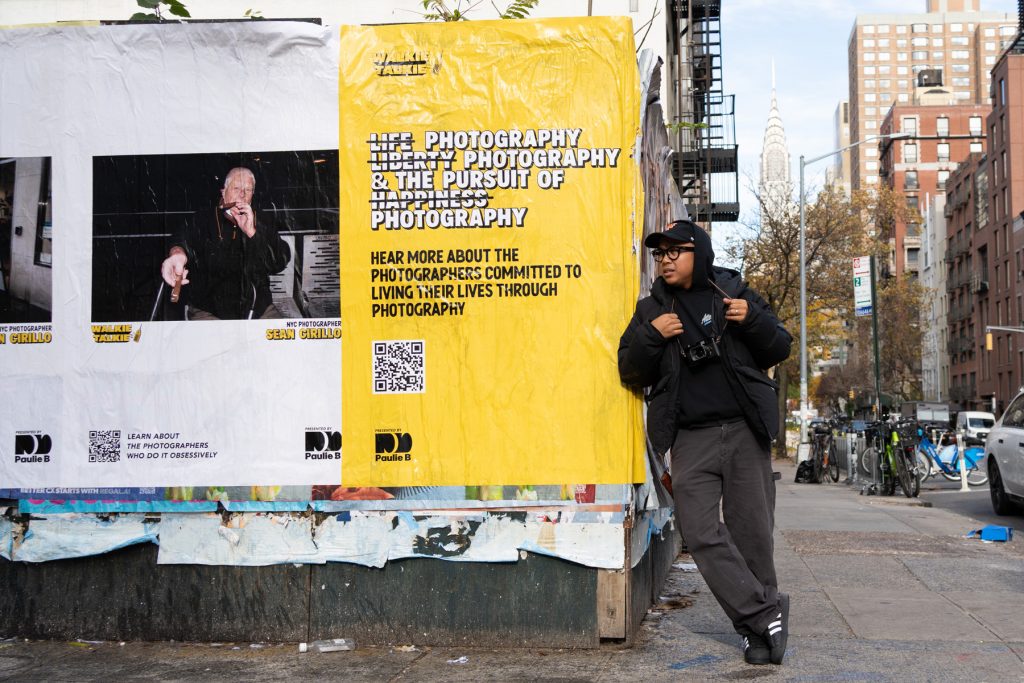
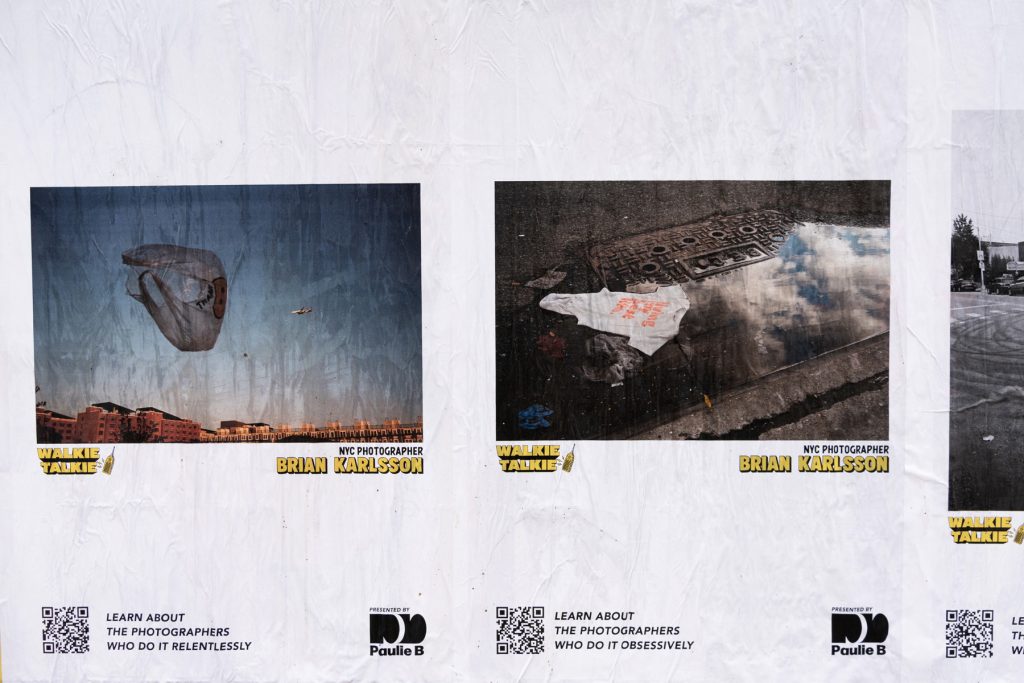
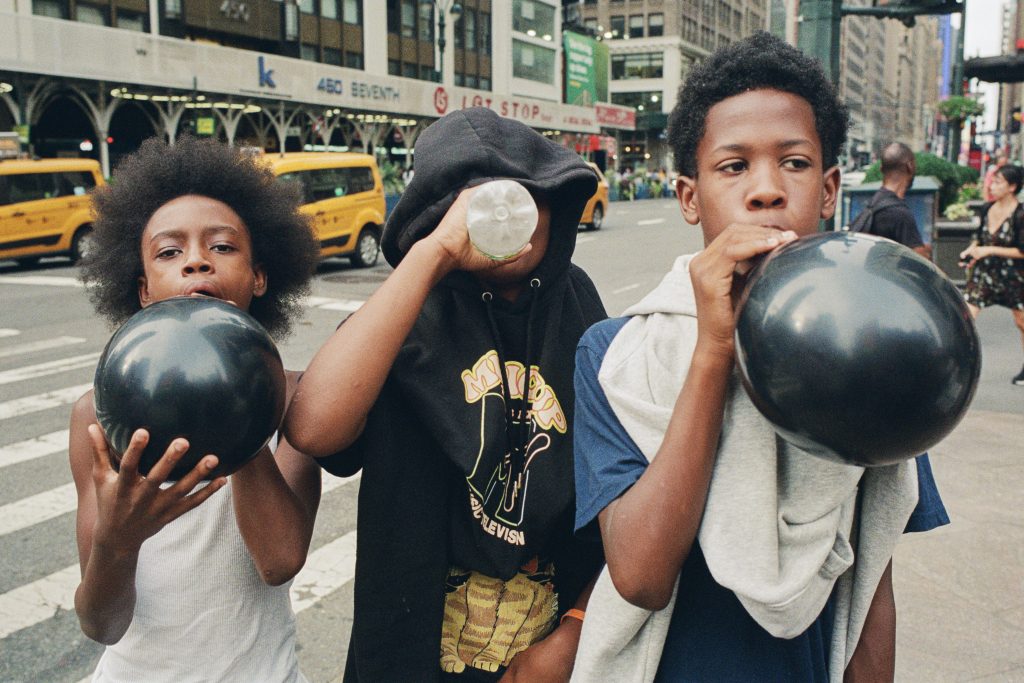

“Finish this sentence: I take photos because…”
Born and raised in Washington D.C., Paulie grew up as the kid who excelled in art class — always drawing, always seeing visually. He started taking photos in the Tumblr era, borrowing his sister’s DSLR before falling deeper into photography during a nine-to-five job in his twenties. After moving to Chicago, he made a rule for himself: take one picture every day for a year. That discipline — paired with the city’s architecture and rhythm — shaped his eye. But it was New York’s unrelenting pace that really pulled him in. The move in 2019 gave him what he calls “the energy my shutter finger was searching for.”
What makes Walkie Talkie unique isn’t just what comes out of it, but the honesty with which it’s shown. There are no guarantees of “the shot.” Some days yield nothing, some days give everything — but the cameras keep rolling. As Paulie puts it, “this is what it’s really like being a street photographer in New York and having conversations with this community that I have.”
Through a new collaboration with UNCLE, that same community is taking over the streets once again — or more precisely, the walls. As Paulie rolls out a rebrand for the channel alongside a new run of videos, work from Walkie Talkie-featured photographers has been wildposted across New York.
Across its run, Walkie Talkie has featured a wide cross-section of photographers shaping the medium today — from Trevor Wisecup to Martha Cooper, to Jas Leon, Mark A. Portillo and Kazu Nakajima who all feature in the wildposting campaign. Each brings their own rhythm, philosophy and city soundtrack to the frame, turning the series into an evolving record of street photography’s present moment.
For Paulie, that moment has come full circle. The work born on the streets finds its way back there, free of galleries and glass. It’s an affirmation of what Walkie Talkie has always stood for: photographers who keep shooting, and keep showing up on the street.
In conversation with UNCLE, Paulie B reflects on the making of Walkie Talkie, the philosophy behind it, and why, even after all these years, the answer to that familiar question still feels the same.
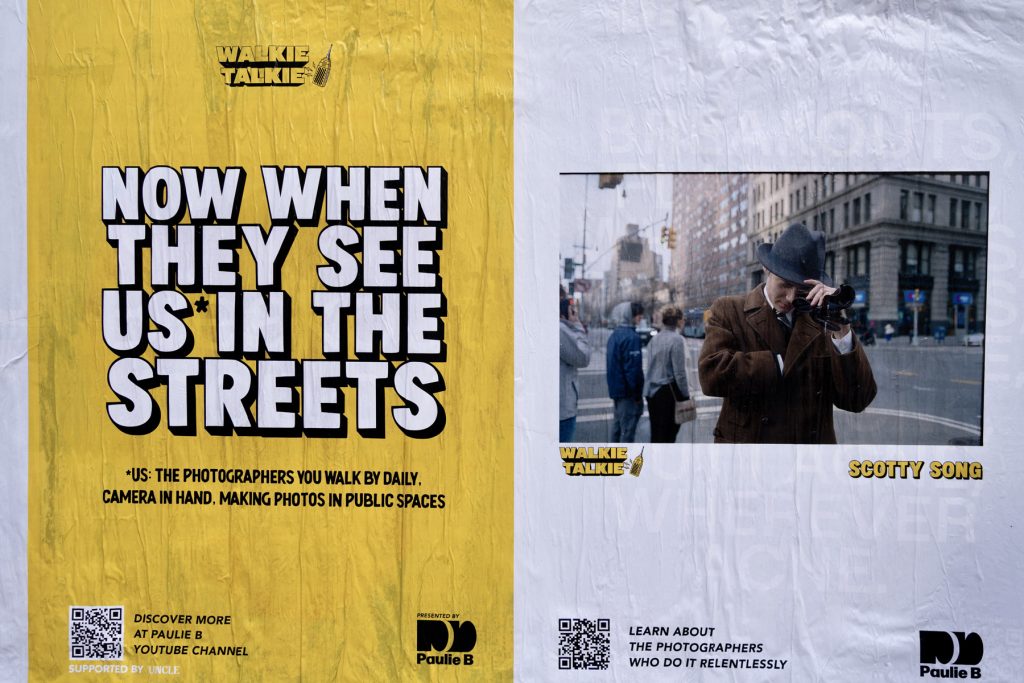
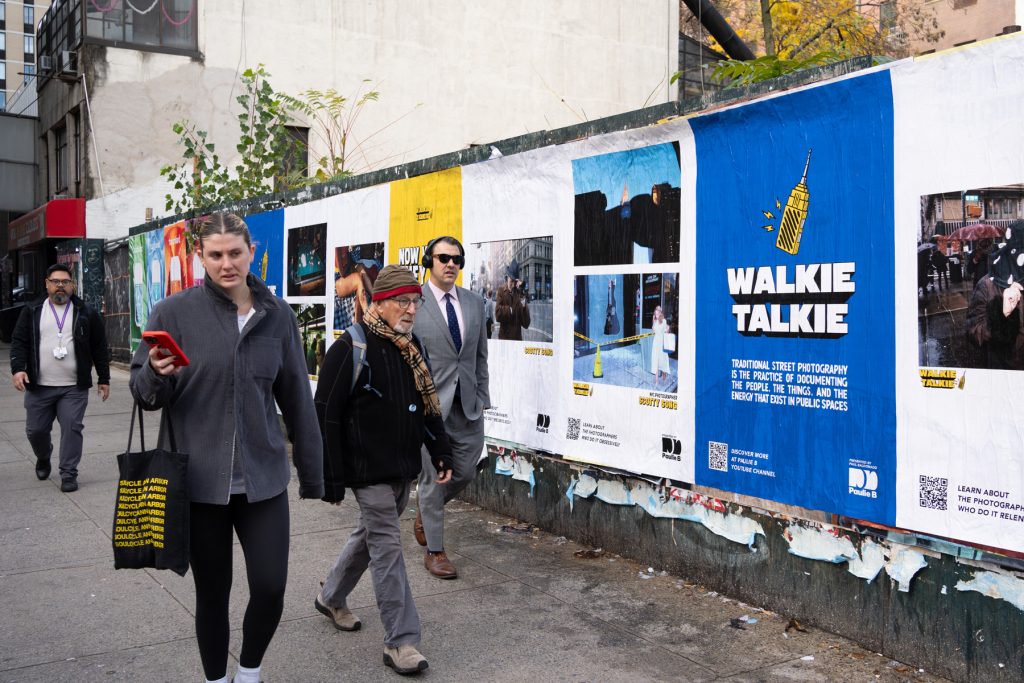
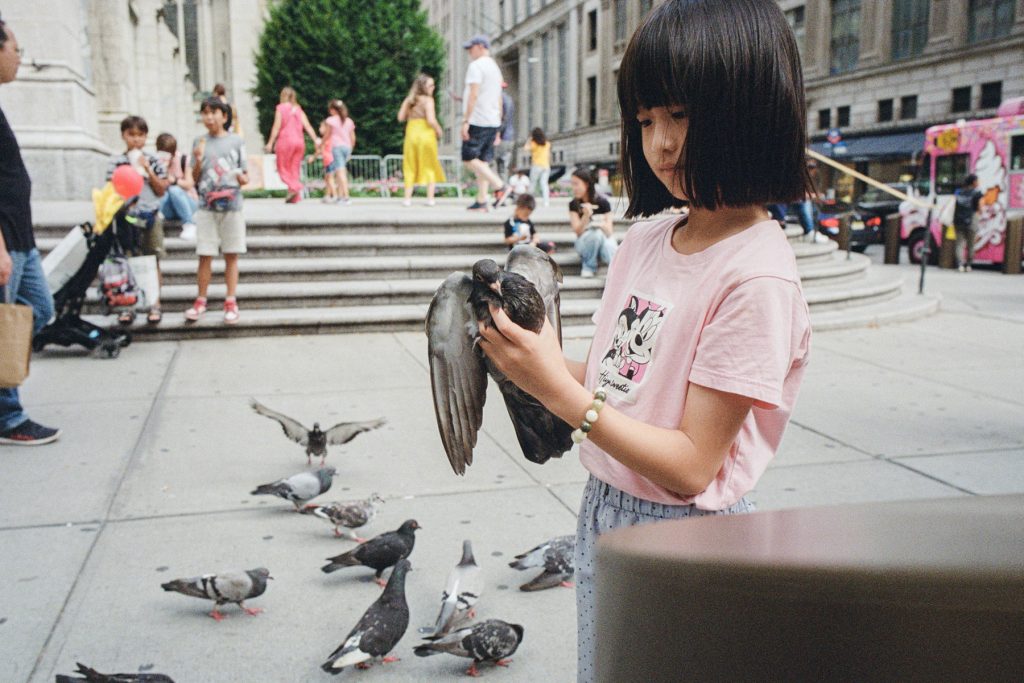
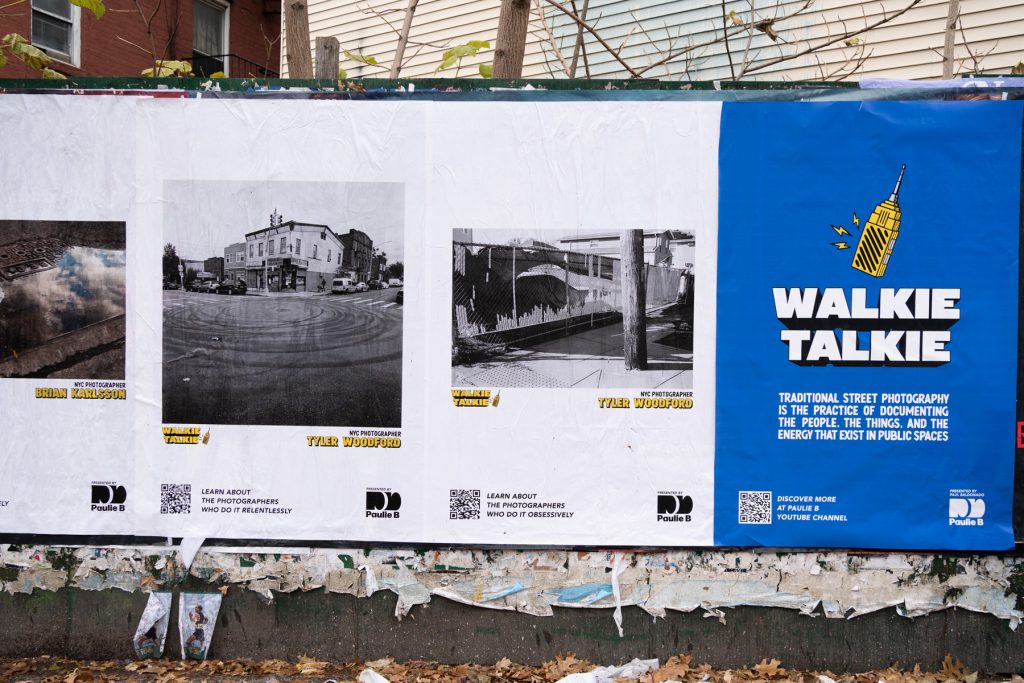
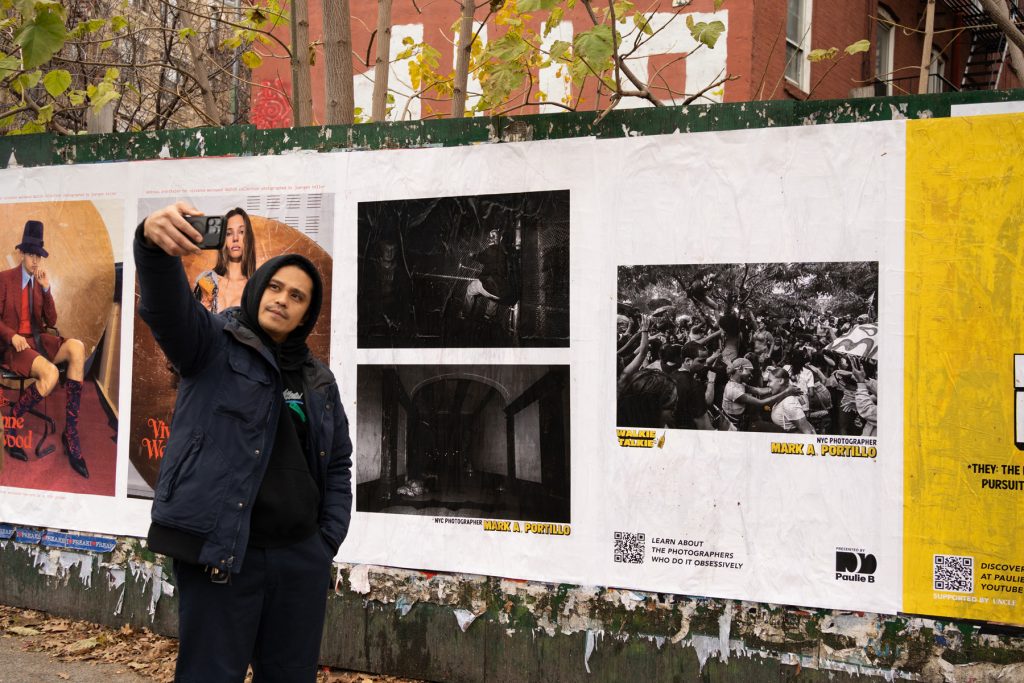
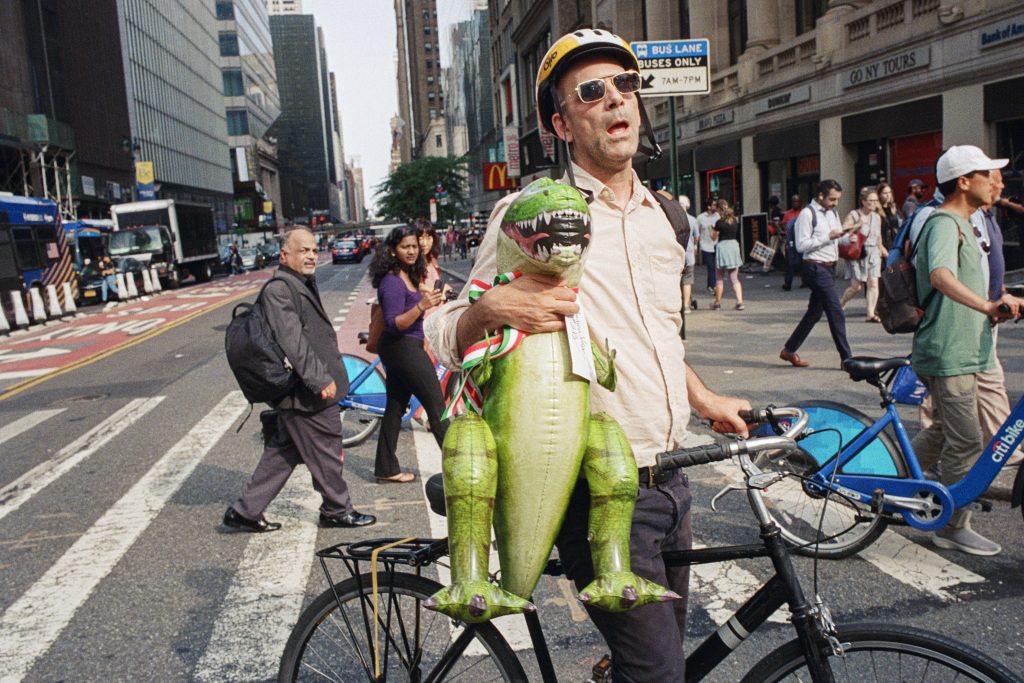
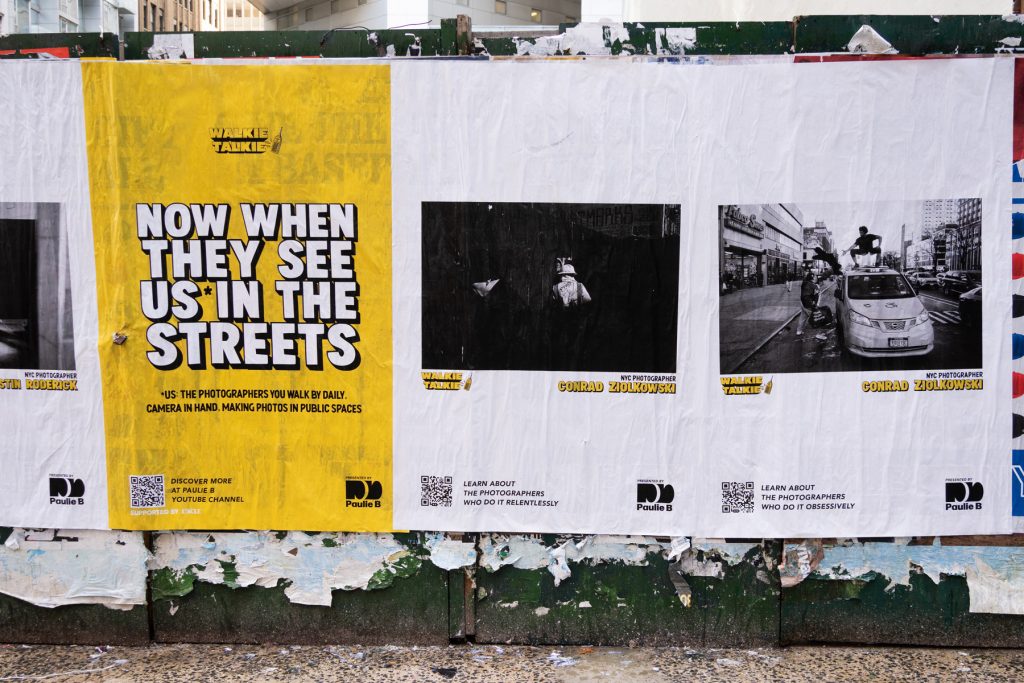
One of the first big influences for me was actually a film — the Vivian Maier documentary. I remember watching it and thinking, oh, this is something that’s been done before — people have been out there, documenting life, photographing strangers, just observing the world as it is. It gave me a sense of history, that what I was doing was part of a much bigger story.
From there, I started digging deeper, meeting other photographers, and learning about figures like Fan Ho and Gary Winogrand. Early on I was really into Fan Ho — the way he used light and geometry, how every shot felt so deliberate. But over time, Winogrand became the main influence for me. He’s been a constant ever since I discovered him.
At first, it was about the images themselves, but now it’s more about his philosophy — his attitude towards taking pictures. He just wanted to be outside shooting, every day, without overthinking it. There’s a relentlessness in that approach that I really connect with.
Winogrand talked about how you should risk failure every time you take a photo, and that stuck with me. Most of what I shoot doesn’t work out — there’s a lot of “crap,” as he would say — but that’s part of it. You’re supposed to put yourself in a position to fail a little bit every time, because that’s how you grow. That mindset really shaped how I see photography, and it’s what keeps me out there walking and shooting every day.
LET’S TALK ABOUT WALKIE TALKIE. HOW DID THE IDEA FIRST COME ABOUT, AND WHAT MADE YOU WANT TO BRING STREET PHOTOGRAPHY TO YOUTUBE?
Street photography videos already existed on YouTube, but Walkie Talkie really came out of what was already happening in my life. I’d spend miles and miles walking every day through New York City with other photographers, having conversations — sometimes about photography, sometimes about life in general. I thought, it would be interesting if people could listen in on that. It’s kind of like a podcast, but visual, and grounded in the streets.
For me, New York has always felt like the mecca of street photography, but the stuff I saw online didn’t reflect what I was actually seeing and experiencing here in real life. The culture, the people, the rhythm — it was all different. So I wanted to bring that authenticity online. This is what it’s really like being a street photographer in New York and having conversations with this community that I have. It’s my way of showing people the energy and honesty of what’s happening here every single day.
WHAT DOES THE ACT OF WALKING MEAN TO YOU IN RELATION TO YOUR WORK? THERE’S SOMETHING MEDITATIVE ABOUT YOUR VIDEOS — HOW DO WALKING AND SHOOTING CONNECT FOR YOU?
For me, walking is the whole thing. The way I practise street photography, it’s a game of effort. Most of what you shoot isn’t going to work out — that’s just how it is. So the more you walk, the more you see, the more chances you give yourself to make something.
If you take a hundred photos in an hour, ninety-nine might be bad. But if you walk for two or three hours, that’s a few hundred chances instead of a hundred. It’s not a perfect ratio, but the effort compounds. The more you put in, the more you get out. You have to be outside, you have to make yourself available, and you have to be willing to accept whatever comes your way. Some days nothing happens, some days you find magic — but you won’t know unless you keep walking.
DID YOU EXPECT IT TO GROW INTO SUCH A BIG, LONG-RUNNING SERIES, OR DID IT START AS MORE OF AN EXPERIMENT?
I had a feeling it would do well. Obviously I had doubts, but I also had this gut sense that it was going to connect with people. Like we talked about, New York is the mecca of street photography, and people everywhere are interested in what’s happening here — not just in photography, but across all creative practices. So giving them a peek behind that door felt like something that would resonate.
Early on, I was getting maybe a thousand views per Walkie Talkie, two thousand, three thousand — but I just knew. I had to keep that mindset, even through the ups and downs of YouTube. One thing I’ve learned from listening to successful people in other fields is that they all share this undenying thought that they’re going to make it. They don’t hope; they know. That really stuck with me.
So even when the numbers were low, I just kept telling myself, I know this is going to work. People probably think I’m raking it in, but I’m really not — I’m still convincing myself it’s going to work. But I have to keep that faith. You make a decision, and then you make it right. That’s the mindset. It’s all going to work out.
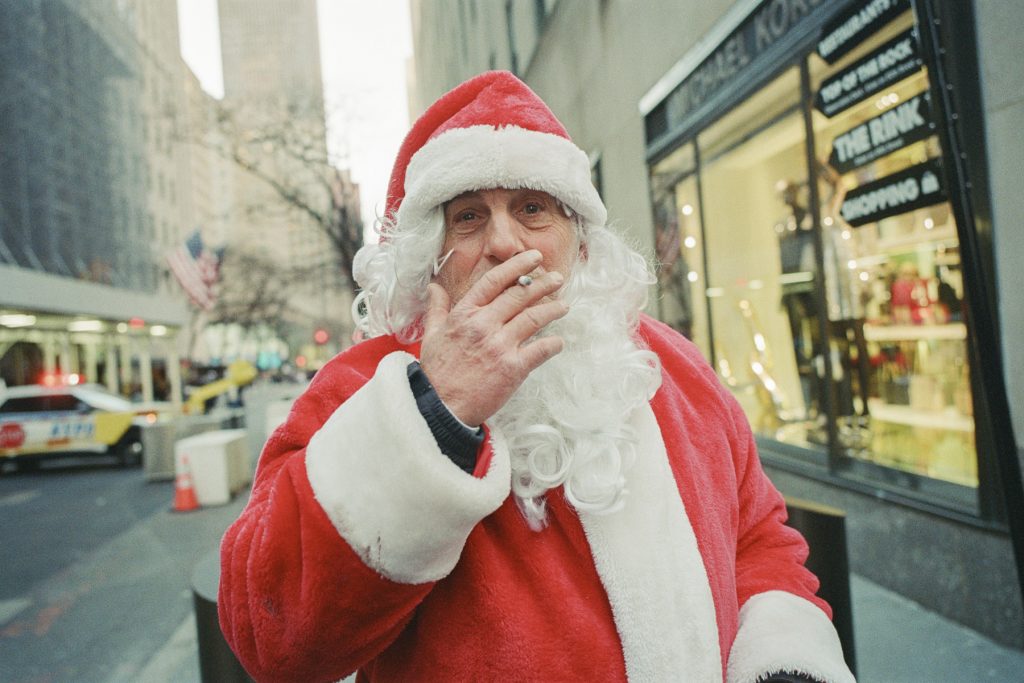
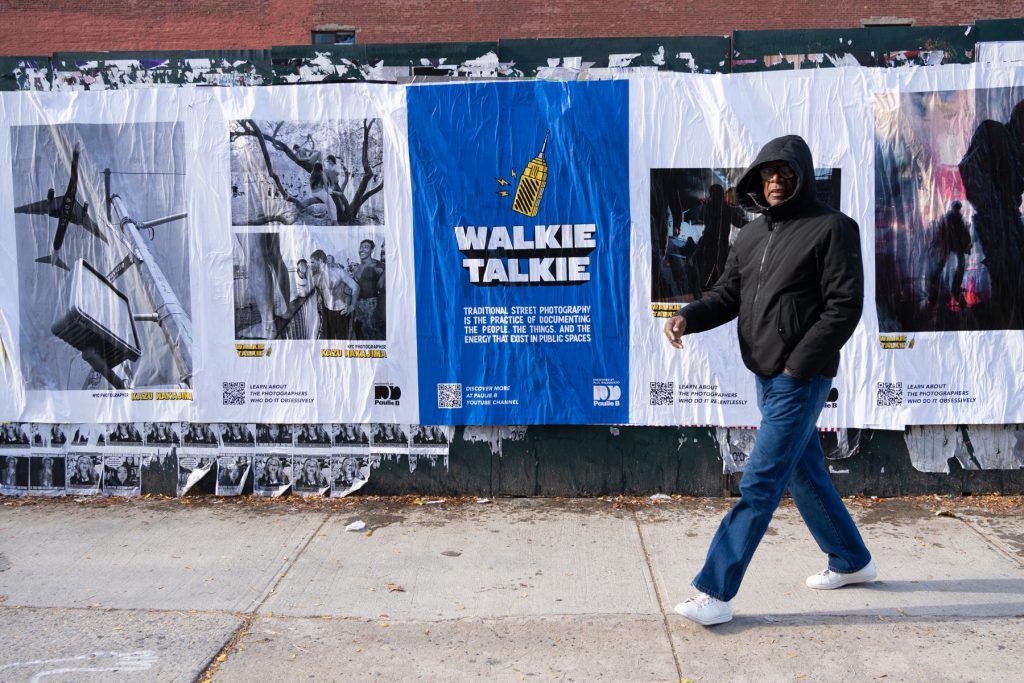

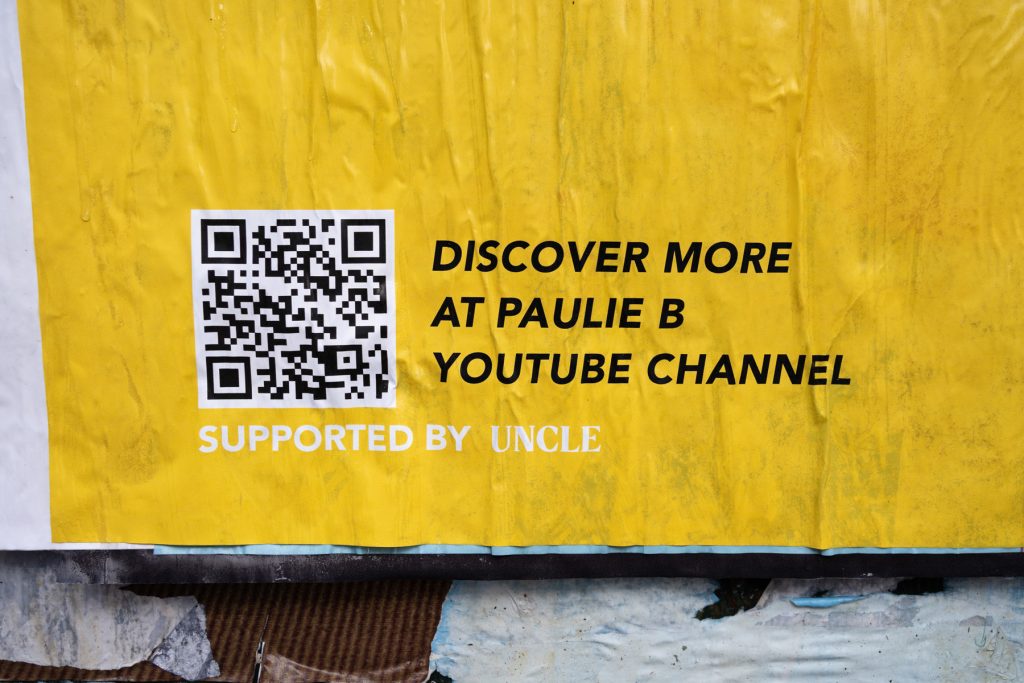
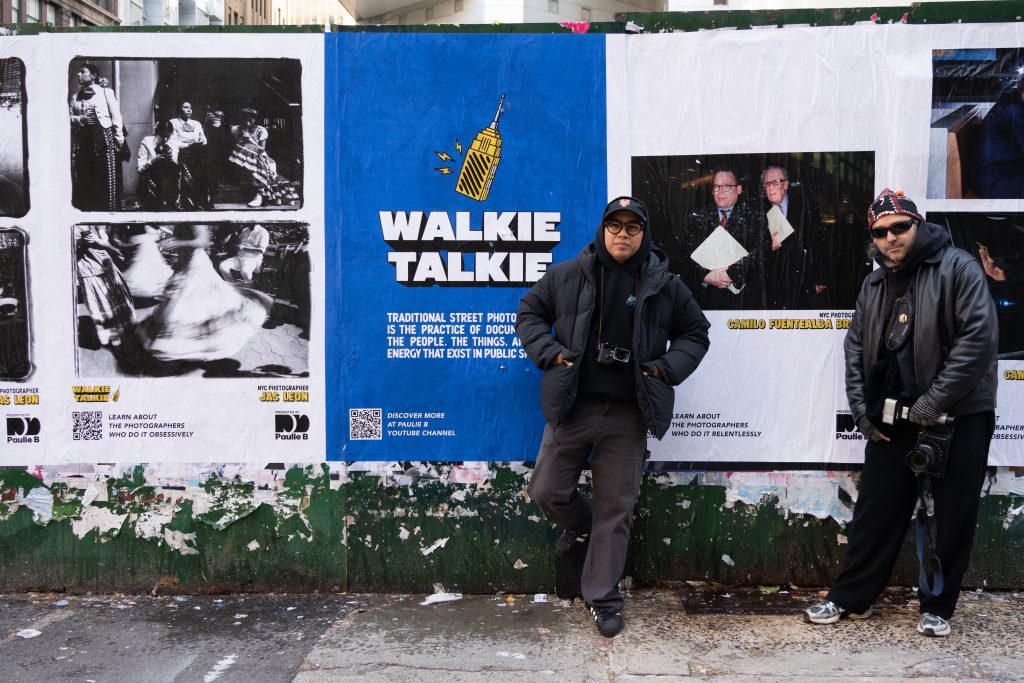
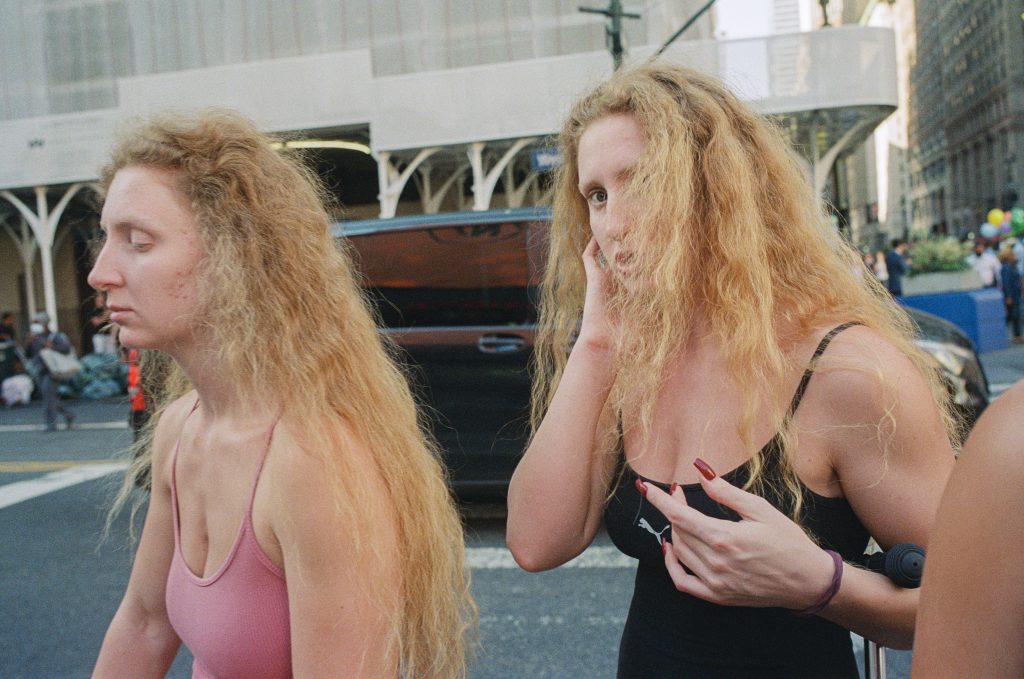
I think Walkie Talkie really brings forward the person behind the camera more than anything. It shows the thought and the work that goes into taking a picture — because in some episodes, you’ll notice there aren’t that many photos being taken. That’s not because someone isn’t a good photographer; sometimes there’s just nothing happening. We don’t control that. We can’t control when good photos or interesting moments appear — we all just start walking, and whatever happens, happens.
What speaks to one photographer might not speak to another, and that’s part of what I love showing. It highlights how different people respond to the same city in completely different ways. It also shows how much work it actually takes — it can take days, even months, to get one photo you’re proud of. I’m only filming for a single day, so I hope Walkie Talkie helps people see that process — the mindset, the work ethic, and the thoughts behind taking pictures.
HOW DO YOU ACTUALLY FIND THE PHOTOGRAPHERS YOU WORK WITH — AND WHAT DO YOU LOOK FOR WHEN DECIDING WHO TO FEATURE NEXT?
There are a couple of ways I go about it. When I travel to a new city, I’ll usually reach out to photographers I already know there and ask them to name three people who really represent the community right now. I’ll do that with five or six people, and once I start seeing the same names come up, I know who to reach out to. That overlap usually tells me who’s active, respected, and pushing things forward.
Here in New York, it’s a little different because I’m so embedded in the scene. I’m out on the streets a lot, watching who’s around, whose work keeps showing up, who’s putting in the effort day in and day out. Over time you develop a sense for who’s genuinely dedicated — the people who are doing it for the love of it, not just for likes or followers. I like to feature people who’ve been out there for at least a couple of years and still have that fire. Street photography can be really cyclical; a lot of people drift in and out. But the ones who stay consistent are the ones I want to spotlight.
THERE’S ALSO A BIT OF EMPHASIS ON THE GEAR PEOPLE USE — THE CAMERAS, THE LENSES, THE SETUPS. WHAT’S YOUR TAKE ON THAT SIDE OF IT? DO YOU BUY INTO THE IDEA THAT “THE BEST CAMERA IS THE ONE IN YOUR HAND”?
Honestly, I only started asking about gear because people in the comments got mad that I wasn’t. Personally, I don’t care that much. Most of the time people are using similar cameras anyway, especially in New York, and that’s usually because they’ve tried something a friend uses and it just works for them.
Gear matters to a certain extent, but I think what people really mean when they say “the best camera is the one in your hand” is that you need to find what works for you. For some people that’s a rangefinder, for others it’s an SLR, or even medium format. You just have to find something that doesn’t get in your way — a camera that feels natural, that lets you shoot without overthinking.
For me, it’s about what’s effective and efficient. Effective meaning it gives you the kind of image you want, and efficient meaning it reduces friction — it lets you move and react without hesitation. Budget’s part of that too. Some cameras are expensive, but if it’s the one that fits your flow and makes you want to go out shooting, then it’s worth it.
AS WELL AS COMMENTS ABOUT EQUIPMENT, A LOT OF COMMENTS UNDER WALKIE TALKIE TALK ABOUT HOW INSPIRING THE EPISODES ARE — PEOPLE CREDIT YOU WITH GETTING THEM OUT SHOOTING AGAIN. HOW DOES THAT MAKE YOU FEEL?
That feels amazing, honestly. There’s this Kobe Bryant quote I think about a lot — he talks about how greatness isn’t just about what you achieve, it’s about your ability to inspire others, who then go on to inspire even more people. So when I see comments from someone saying they picked up their camera again because of Walkie Talkie, that really hits me.
It’s wild to think that someone could watch a video, go out that same day, and take the best photo of their life — and that maybe, in some small way, I helped spark that. That’s the kind of ripple effect you dream of. You put this work out into the world, not really knowing who it’s going to reach or how it’ll land, and then you start to see it actually motivate people to create. That’s the best feeling there is.
YOU’VE BUILT THIS ENTIRE PLATFORM AROUND THE STREETS — AND NOW YOUR IMAGES ARE LITERALLY GOING TO BE ON THE STREETS THROUGH THIS UNCLE WILDPOSTING CAMPAIGN. HOW DOES IT FEEL TO SEE WALKIE TALKIE PLASTERED ACROSS THE SAME KIND OF WALLS WHERE SO MUCH OF YOUR WORK BEGINS?
It feels really natural — almost poetic. The work was made on these streets, and now it’s being put back into that same environment. It’s not hanging in a gallery or someone’s living room; it’s out in public, part of the city again. These posters could get torn down, tagged over, or end up in the background of someone else’s photo — and I love that. That’s what street photography is. You never know what’s going to happen out there, and that same uncertainty is what makes it exciting.
So to have Walkie Talkie plastered across New York feels right. It closes the loop. It’s like the series is returning to where it came from — the walls, the pavements, the chaos, the energy. It’s all part of the same story.
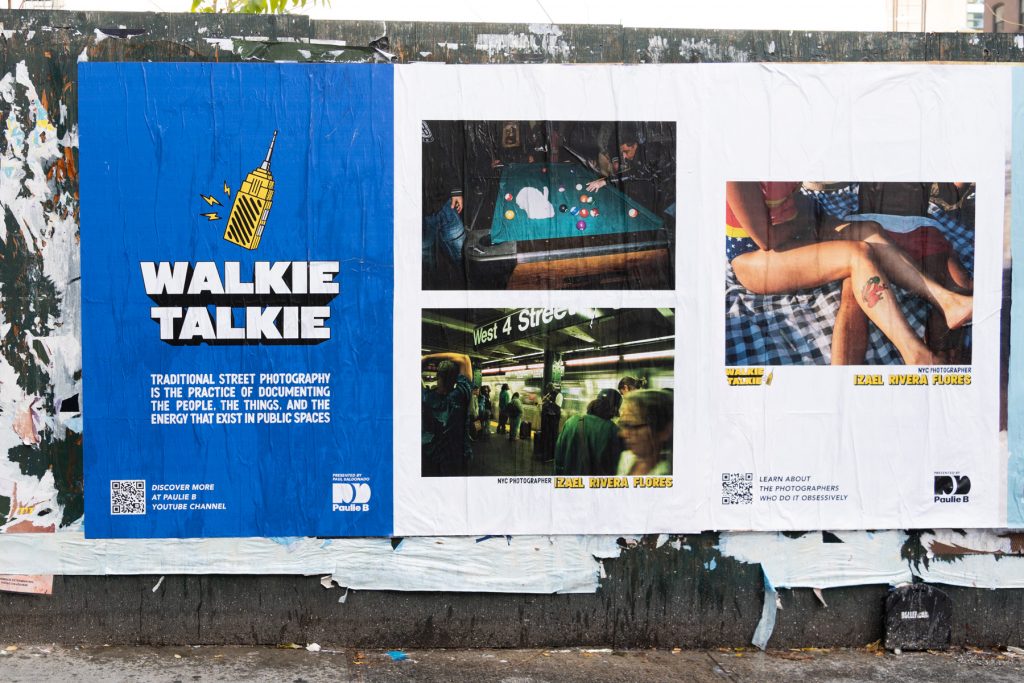

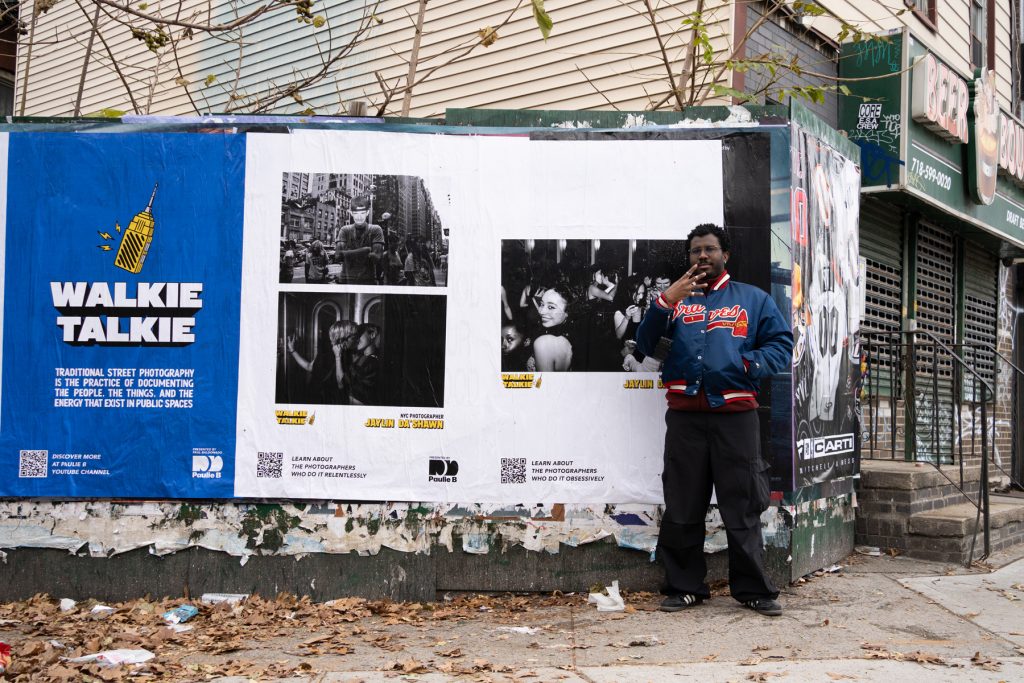
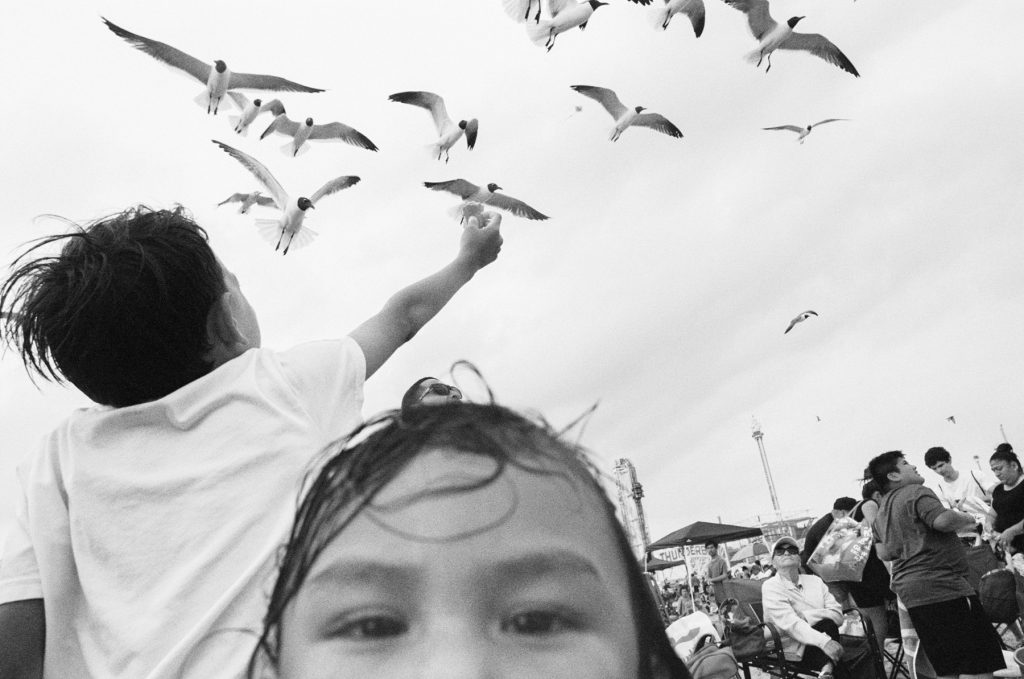
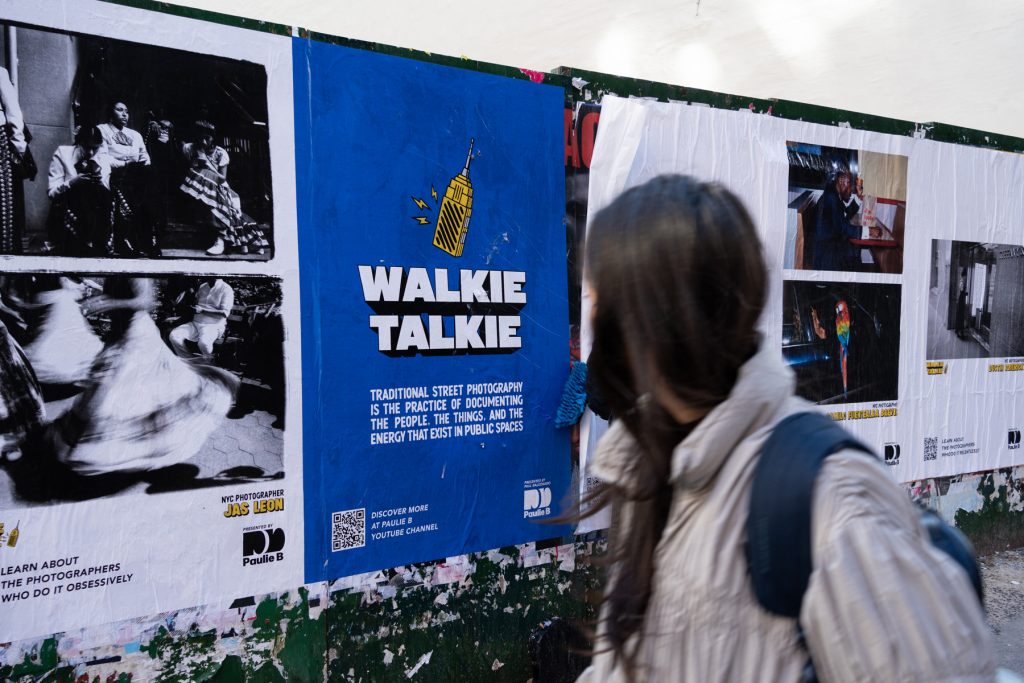
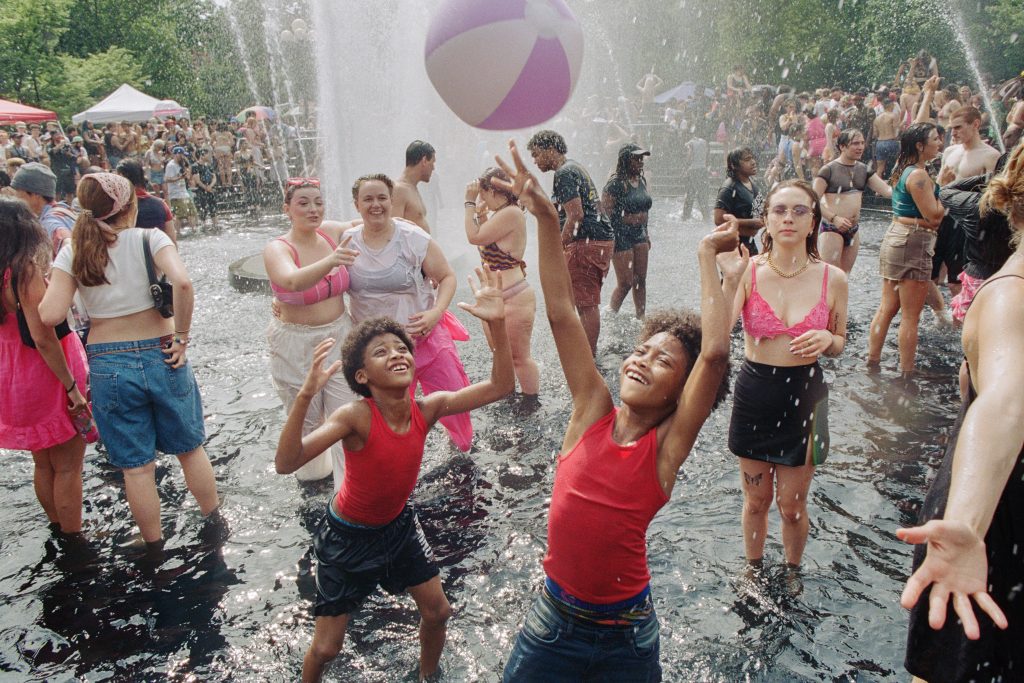
New York will always be a breeding ground for creativity. It’s still the epicentre — always ahead of the curve. When I see trends starting here in the photo community, I know I’ll see them popping up in other cities two or three years later. Everything happens a little faster here. The pace, the density, the diversity — it forces you to adapt, to stay alert.
That said, it has changed. I don’t know if it’s me getting older or just the times, but pre-COVID New York felt a bit more random, more eclectic. You could turn a corner and stumble into something special. Now it feels a little more contained, even though the foot traffic’s back. But the diversity is what keeps it interesting — you can walk one block and hear five languages, see ten different worlds intersecting. That constant shift is what keeps the city alive, and it’s what makes it the best place in the world for street photography.
THE SERIES OFTEN HIGHLIGHTS NOT JUST ART, BUT SOCIOLOGY — WHO OCCUPIES PUBLIC SPACE, HOW PEOPLE INTERACT, WHAT THE CITY GIVES BACK. HOW CONSCIOUS ARE YOU OF THAT SOCIAL LAYER WHEN YOU’RE FILMING? AND WHAT’S YOUR TAKE ON THE WIDER MOMENT STREET PHOTOGRAPHY IS IN RIGHT NOW?
When I’m filming Walkie Talkie, I’m usually focused on the flow of the conversation, not tripping over myself, keeping the person in frame — all those small things that make it work. So in the moment, I’m not always thinking about the sociology of what’s happening around us. But when I go back and watch the footage, I notice how much those layers matter — who’s in the background, what they’re wearing, what’s being built or torn down. It’s all a reflection of the city as it is right now.
That’s why I’ll take photos of things like construction sites or people on their phones. It might not seem interesting at the time, but years from now, that stuff will tell a story about how we lived. Everyone’s always chasing “timeless” photos, trying to make something that looks like it’s from another era — but I think everything becomes nostalgic if you give it time. You just have to document what’s in front of you, because in fifty years, those moments will be the time capsule.
As for the wider scene, I think it’s shifting. A few years back, everyone was obsessed with making everything candid — no eye contact, no interaction — but now people are more relaxed about that. There’s less gatekeeping about what “counts” as street photography, and that’s a good thing. The only real frustration I ever hear is people worrying too much about what others think. My attitude’s always been: just go have fun, take the pictures you want to take.
And when it comes to photography in the bigger picture — in this digital, algorithm-driven world — I think it comes down to why you do it. For some people, it’s about validation, likes, engagement. But the ones I connect with are the ones who do it because they have to — because if they don’t, they feel off balance. I think those are the real photographers.
We don’t know what will tell the story of our time — maybe it’ll be the artful street photos, maybe it’ll be TikToks and day-in-the-life videos — but that’s not the point. The point is to make work because you need to. To go out, walk, and pay attention. To me, that’s what keeps the whole thing alive.
WHAT’S NEXT FOR YOU AND WALKIE TALKIE — WHERE DO YOU WANT TO TAKE IT FROM HERE?
We’re rebranding everything with new visuals, new logos, and there’ll be things that branch off from it — merch, zines, other projects that build around the community. The core of it will always stay the same though: conversations with photographers, out on the street, in the places where the work actually happens.
New York will always be the home base because that’s where it was born, but I’m also continuing the “around the U.S.” version and growing the global side. I’ve already done places like Rome and the Philippines, and next year I want to hit four or five international cities. It’s just hard to travel as much as I’d like now that I’ve got two small kids — but I still want to keep pushing it forward and showing how different cities live and breathe through photography.
COMPLETE THIS PHRASE: I TAKE PHOTOS BECAUSE…
I take photos because it fills my cup. Every time I hit the shutter, it’s like taking a sip of water — it keeps me alive. When I’m not shooting, I feel empty, restless, almost dehydrated. I don’t know if I could live without it at this point.
There’s also another side to it that’s a bit more personal. When I first started out, I told a friend I wanted to be one of the greats — not even really knowing what that meant yet. I just knew I wanted to do something meaningful with my life, something that lasts. Photography, and now Walkie Talkie, gives me a way to do that. It’s how I leave an imprint — on people, on culture, on the world around me. That’s why I take photos.








